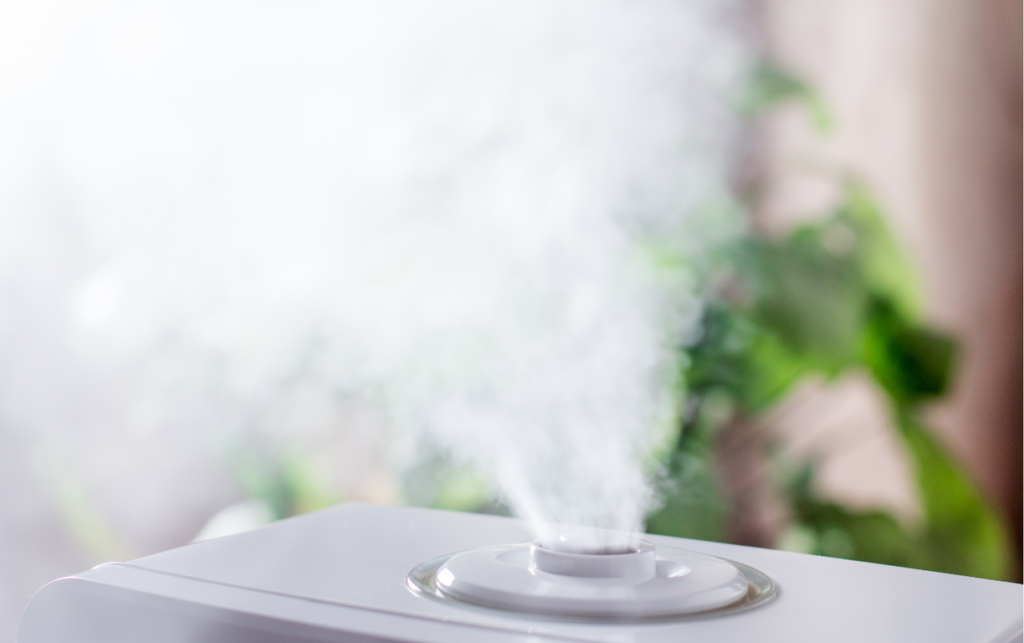Physical Address
304 North Cardinal St.
Dorchester Center, MA 02124
Physical Address
304 North Cardinal St.
Dorchester Center, MA 02124

Dealing with dry eyes can be frustrating and uncomfortable. I've often found myself searching for solutions that truly make a difference. One common remedy that pops up is using a humidifier, but the question remains: should I opt for a warm or cool humidifier?
Both types have their benefits, but understanding how they affect moisture levels in the air can help me make an informed choice. In this
Dealing with dry eyes can be frustrating and uncomfortable. I’ve often found myself searching for solutions that truly make a difference. One common remedy that pops up is using a humidifier, but the question remains: should I opt for a warm or cool humidifier?
Both types have their benefits, but understanding how they affect moisture levels in the air can help me make an informed choice. In this article, I’ll explore the differences between warm and cool humidifiers, their impact on dry eyes, and which one might be the best fit for my needs. Let’s dive into the science behind humidity and eye comfort to find the right solution for those pesky dry eye symptoms.

Dry eyes occur when the body fails to produce enough tears to keep the eyes moist. This condition can greatly affect comfort and vision.
Causes of dry eyes include aging, certain medical conditions, and environmental factors. Aging reduces tear production and changes tear composition. Medical conditions, like Sjögren’s syndrome or rheumatoid arthritis, may also contribute significantly. Environmental factors, like smoke, wind, or dry climates, exacerbate the issue. Prolonged screen time leads to decreased blinking, contributing to dryness. Additionally, some medications, such as antihistamines and antidepressants, can reduce tear production.
Symptoms of dry eyes encompass a variety of discomforts. Common signs include a gritty sensation, burning, or stinging in the eyes. Itching or redness may also occur. Individuals often experience blurred or fluctuating vision, mainly when using screens or reading. Increased sensitivity to light can be another indicator. In severe cases, dry eyes may result in excessive watering as the eyes attempt to compensate for the lack of moisture.
Humidifiers play a essential role in maintaining optimal indoor humidity levels and can significantly alleviate dry eye symptoms. Understanding the differences between warm and cool humidifiers helps me choose the right one for specific needs.
A warm humidifier heats water to create steam, releasing warm moisture into the air. This type can be beneficial during colder months as it adds both humidity and warmth, potentially soothing dry eyes. Warm humidifiers often come in two forms: steam vaporizers and warm mist humidifiers. Steam vaporizers boil water to produce steam, while warm mist humidifiers use a heating element to warm the water without boiling it. Each type increases indoor humidity effectively but may require regular cleaning to avoid mineral buildup.
A cool humidifier releases cool moisture into the air, helping to maintain comfortable humidity levels without raising the temperature. This type includes various models, such as evaporative, ultrasonic, and impeller humidifiers. Evaporative humidifiers use a fan to pass air through a wet wick or pad, while ultrasonic humidifiers utilize high-frequency vibrations to create a fine mist. Impeller humidifiers rely on rotating disks to fling water into the air. Cool humidifiers often operate quietly and require less maintenance compared to warm humidifiers, making them a popular choice for all-year-round use.
Warm humidifiers offer distinct advantages for alleviating dry eyes. They enhance comfort by providing optimal humidity, thereby reducing dryness in both the air and the eyes.
Increased comfort arises from the warmth that warm humidifiers provide. Warm mist can soothe irritated eyes, making it easier to blink and reducing the gritty sensation often associated with dryness. By maintaining an adequate humidity level indoors, these humidifiers create a more comfortable environment, particularly in colder months when heating systems can exacerbate dryness. Users report noticeable relief from symptoms such as burning or stinging, leading to improved overall comfort.
Additional health benefits come from using warm humidifiers. They can help reduce the spread of airborne viruses by warming and moisturizing the air, which may assist in preventing respiratory infections. The steam produced by warm humidifiers can also soothe nasal passages and sinuses, contributing to clearer airways. Regular use may help improve sleep quality by promoting a more comfortable breathing environment, which indirectly supports eye health by allowing for longer periods of uninterrupted sleep. Furthermore, warm moisture can aid in relieving tension or stress that may contribute to dry eye symptoms, fostering a sense of overall well-being.
Cool humidifiers present significant benefits for those suffering from dry eyes. They help maintain comfortable moisture levels in the air, preventing further irritation and discomfort.
Cool humidifiers improve evaporation rates, enhancing moisture levels in the environment. By releasing cool vapor, they maintain a balanced humidity level that hydrates the air without making it uncomfortably warm. This consistent moisture reduces the evaporation of tears, providing immediate relief from dryness. When I use a cool humidifier, it aids in keeping my eyes lubricated, making them feel more comfortable throughout the day.
Cool humidifiers are generally more energy-efficient than their warm counterparts. They operate at lower temperatures, resulting in reduced energy consumption. This efficiency not only saves on energy bills but also makes cool humidifiers suitable for continuous operation, providing long-lasting relief for dry eyes. When I run a cool humidifier overnight, it maintains optimal humidity without significantly impacting energy use, ensuring a restful environment conducive to eye health.
Choosing the right humidifier is essential for managing dry eyes effectively. Both warm and cool humidifiers have unique benefits and considerations, impacting comfort and moisture levels in the environment.
Warm humidifiers enhance moisture levels by heating water to create steam. This process can provide immediate relief from dry eyes, especially in cold weather. The warmth helps soothe irritation, improves tear production, and reduces the gritty sensation that often accompanies dry eyes. Studies suggest that humid air enhances comfort, particularly for individuals exposed to dry indoor environments due to heating systems.
Cool humidifiers also play a significant role in alleviating dry eyes. By releasing cool moisture into the air, they maintain optimal humidity levels without adding heat. This approach prevents excessive evaporation of tears, offering persistent relief. Many users appreciate the consistent hydration provided by cool humidifiers, especially during warmer months when indoor temperatures remain high.
When selecting between warm and cool humidifiers, consider factors like environment, maintenance, and health conditions. Warm humidifiers require regular cleaning to avoid mineral buildup and potential bacterial growth. They’re often noisier and may create safety concerns, especially around children and pets. Users should maintain proper water levels and ensure ventilation while using warm units.
Cool humidifiers, in contrast, tend to be quieter and more energy-efficient, running at lower temperatures. They allow for continuous operation throughout the night. However, regular maintenance is still necessary, including cleaning filters and tanks to prevent mold and mildew. Individuals with respiratory issues may benefit more from cool humidifiers, as they avoid the risk of burns from heated water.
Ultimately, selecting the best humidifier for dry eyes depends on personal preferences and lifestyle. Both types can be effective, but understanding their specific advantages and potential drawbacks guides users towards the right choice for their needs.
Choosing between a warm or cool humidifier for dry eyes ultimately comes down to personal preference and specific needs. Warm humidifiers can provide soothing relief during colder months while cool humidifiers maintain comfortable moisture levels year-round.
I’ve found that the right humidifier can significantly improve comfort and reduce symptoms of dry eyes. Whether I opt for the warmth of a steam vaporizer or the refreshing cool mist of an ultrasonic model, both options have their merits.
By understanding how each type affects humidity and eye comfort, I can make an informed decision that best addresses my dry eye symptoms.